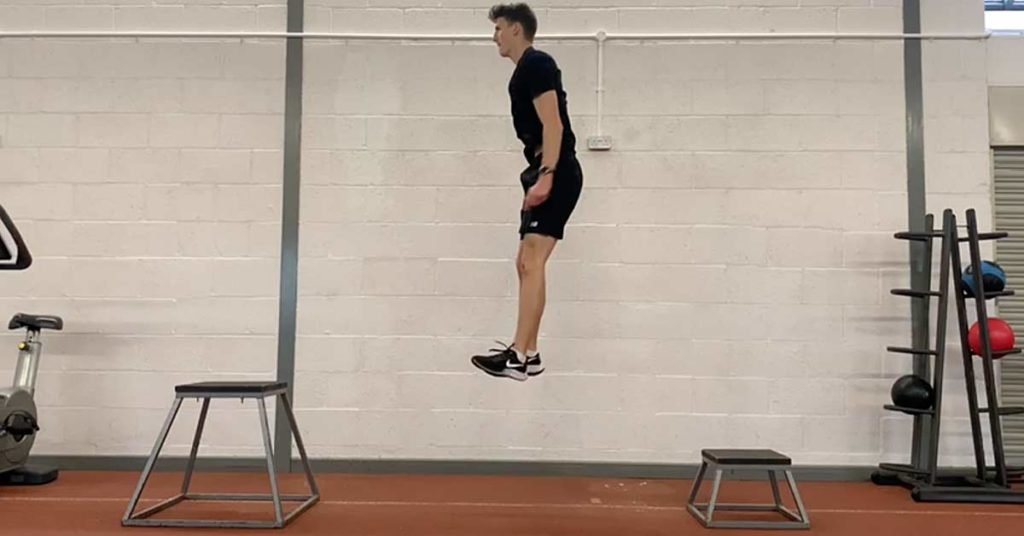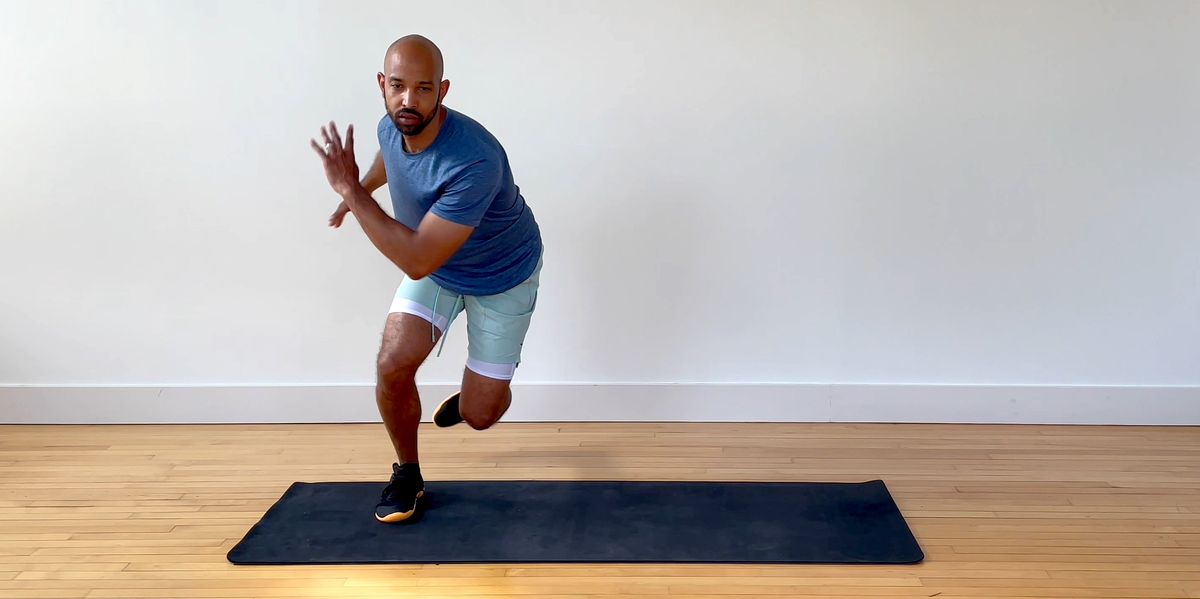Exercise Daily – Are you looking to take your athletic performance to the next level? Plyometric exercises might be just what you need. Whether a beginner or a seasoned athlete, incorporating plyometrics into your training routine can help you boost power, agility, and overall athleticism. In this article, we’ll delve into the world of plyometric exercises and unveil a list of the best ones suitable for athletes of all levels. So, let’s get started on this journey to elevate your athletic performance effortlessly.
Plyometric exercises are a game-changer for athletes of all levels. They are a dynamic form of training that involves quick and powerful movements, aiming to improve your explosiveness, speed, and agility. Whether you’re a basketball player striving for a higher vertical jump, a soccer player looking to enhance your sprinting ability, or simply someone who wants to boost overall athleticism, plyometrics can help you achieve your goals.
Plyometric Training Fundamentals
Plyometric training, often called “jump training,” is a dynamic exercise focusing on explosive movements. This training methodology is rooted in science and is a crucial component of athletic conditioning for athletes of all levels.
The core idea behind plyometrics is utilizing the stretch-shortening cycle (SSC) of muscles. This cycle involves three phases: the eccentric phase (muscle lengthening), the amortization phase (transition), and the concentric phase (muscle shortening). Plyometric exercises exploit this cycle to enhance power, speed, and agility. Here are the key elements of plyometric training:
1. Quick Contractions
Plyometrics involve rapid, forceful contractions of muscles. This quick muscle action generates maximum force in minimal time, essential for athletic performance.
2. Muscular Strength and Elasticity
Plyometric exercises focus on the neuromuscular system, making them valuable to your fitness routine. Moreover, they work wonders to improve muscle strength and the stretch-reflex mechanism. Additionally, this unique feature allows your muscles to swiftly transition from lengthening to shortening, ultimately producing explosive movements. So, if you’re aiming to boost your athletic performance and power, incorporating plyometrics into your training is an essential step to consider.
3. Sports-Specific
Plyometric exercises can be tailored to mimic the movements of specific sports. This specificity is crucial for athletes aiming to improve their performance in their chosen field.
4. Intensity and Volume
Plyometric workouts are characterized by high-intensity bursts of activity followed by adequate rest. This balance between intensity and recovery is vital to prevent overtraining and injuries.
5. Plyometric Progression
Athletes start with basic plyometric exercises and gradually progress to more challenging ones as their strength and skill levels improve. Additionally, This gradual progression minimizes the risk of injury.
6. Full-Body Engagement
Plyometric exercises engage multiple muscle groups simultaneously, improving coordination, balance, and overall athleticism.
7. Athletic Benefits
The primary goal of plyometrics is to improve an athlete’s ability to generate explosive power, which translates into enhanced speed, agility, and vertical jump height. These benefits are valuable across various sports.

Plyometrics in Sports
Plyometric training has found its place in various sports, becoming a cornerstone of many athletes’ training regimens. Let’s explore how plyometrics are used in different sports and how they benefit athletes.
1. Basketball
In basketball, explosive power and agility are essential. Plyometric exercises such as box jumps, lateral bounds, and squat jumps help basketball players improve their vertical jump, quick lateral movements, and overall agility. This translates into better rebounding, shot-blocking, and maneuverability on the court.
2. Soccer
Soccer players benefit greatly from plyometrics. Exercises like high knees, bounding drills, and agility ladder work enhance their speed, agility, and coordination. These skills are vital for dribbling, changing direction swiftly, and competing for the ball.
3. Volleyball
Plyometrics significantly improve a volleyball player’s ability to spike, block, and dive for the ball. Jump training, including depth jumps and spike approach drills, increases vertical jump height and explosiveness at the net.
4. Track and Field
Plyometrics are a staple in track and field training. Sprinters use them to enhance their explosive starts and speed, while long and triple jumpers employ plyometrics to maximize their takeoff power. Pole vaulters and high jumpers also benefit from plyometric exercises to achieve greater heights.
5. Football
Football players, whether on the field or in the gym, incorporate plyometrics to boost their agility, strength, and speed. Exercises like hurdle drills, cone drills, and explosive push-ups help them excel in positions that demand quick direction changes and tackling prowess.
6. Mixed Martial Arts (MMA)
MMA fighters rely on plyometric exercises to improve their striking power and takedown explosiveness. However, plyometric push-ups, medicine ball throws, and jump knee strikes are examples of how plyometrics enhance their performance in the octagon.
7. Gymnastics
Plyometrics are valuable for gymnasts looking to enhance their vaulting, tumbling, and floor routines. Exercises like box drills, standing-back tucks, and depth jumps help gymnasts develop the explosive power needed for intricate maneuvers.
8. CrossFit
CrossFit athletes incorporate plyometrics into their workouts to improve overall athleticism. Plyo box jumps, wall balls and box step-ups are common exercises that enhance strength, endurance, and explosiveness.
9. Baseball
Baseball players utilize plyometrics to improve their throwing velocity, batting power, and agility on the field. Medicine ball throws, lateral bounds, and rotational exercises help them excel in their positions.
Benefits of Plyometrics
Plyometrics offers a wide range of benefits for athletes and fitness enthusiasts alike. These explosive exercises are highly effective in improving various aspects of physical performance. Let’s explore the key benefits of plyometrics:
1. Increased Power
One of the primary benefits of plyometric training is the significant increase in muscular power. Explosive movements, such as jumps and throws, activate fast-twitch muscle fibers, leading to greater power production. This increased power is valuable in many sports and activities, from sprinting to weightlifting.
2. Enhanced Speed
Plyometrics help improve an athlete’s speed by enhancing the efficiency of the stretch-shortening cycle (SSC) of muscles. However, this translates into faster acceleration and higher top-end speed, which is crucial for sports like track and field, soccer, and basketball.
3. Improved Agility and Coordination
Plyometric exercises require precise timing and coordination, which enhances an athlete’s agility and motor skills. Improved coordination is beneficial in sports that demand quick direction changes, like tennis or football.
4. Better Vertical Jump
For athletes looking to increase their vertical jump height, plyometrics are a go-to training method. However, boxing and depth jumps strengthen leg muscles and improve the ability to generate explosive force, resulting in higher jumps.
5. Injury Prevention
Plyometric training can help prevent injuries by enhancing muscle strength and stability. Stronger muscles and tendons are less susceptible to strains and sprains. This injury prevention aspect is particularly valuable for athletes.
6. Sports Performance Enhancement
Plyometrics can be tailored to mimic the movements and demands of specific sports. Athletes can benefit from sports-specific plyometric exercises that enhance their skills, whether a sprinter working on their explosive start or a basketball player improving their dunking ability.
7. Calorie Burn and Weight Management
Plyometric workouts are intense and calorie-burning. They can be incorporated into weight loss routines, helping individuals shed pounds and improve overall fitness. Exercises like burpees and jump squats are particularly effective for burning calories.

Plyometrics for Weight Loss
Plyometrics can be an excellent addition to your fitness routine if you want to lose weight. These high-intensity, explosive exercises help burn calories and promote muscle development and cardiovascular fitness. Here’s how plyometrics can aid in weight loss, along with a sample workout routine: How Plyometrics Aid in Weight Loss:
1. Calorie Burn
Plyometric exercises are highly intense and require significant energy. As a result, they can burn a substantial number of calories in a relatively short period. This calorie expenditure contributes to weight loss.
2. Metabolic Boost
Plyometrics elevate your heart rate and increase your metabolism during and after your workout. This post-exercise calorie burn, known as the afterburn effect or excess post-exercise oxygen consumption (EPOC), can help you continue burning calories even after your workout.
3. Muscle Development
Plyometric exercises engage multiple muscle groups, promoting muscle development. Muscle tissue burns more calories at rest than fat tissue, so increasing muscle mass can boost your resting metabolic rate (RMR).
Plyometrics for Injury Prevention
Before starting this routine, warm up adequately with 5-10 minutes of light aerobic exercise and dynamic stretches.
High Knees:
- Stand in place and rapidly lift your knees as high as possible.
- Perform for 30 seconds to 1 minute.
- Rest for 30 seconds.
Jump Squats:
- Begin in a squat position.
- Explosively jump into the air, extending your arms overhead.
- Land softly in a squat position.
- Perform 10-15 repetitions.
- Rest for 30 seconds.
Burpees:
- Start in a standing position.
- Drop into a squat, place your hands on the floor, and kick your feet back into a push-up position.
- Perform a push-up, then jump your feet back to the squat position.
- Explode upward into a jump, reaching your arms overhead.
- Perform 8-12 repetitions.
- Rest for 30 seconds.
Box Jumps:
- Stand in front of a sturdy box or platform.
- Jump onto the box, landing softly with your knees slightly bent.
- Step down and repeat.
- Perform 10-15 repetitions.
- Rest for 30 seconds.
Mountain Climbers:
- Begin in a push-up position.
- Alternate bringing your knees towards your chest in a running motion.
- Perform for 30 seconds to 1 minute.
- Rest for 30 seconds.
Jumping Lunges:
- Start in a lunge position.
- Explosively jump into the air, switching your legs mid-air and landing in a lunge with the opposite leg forward.
- Perform 10-12 repetitions on each leg.
- Rest for 30 seconds.

Plyometric Equipment
When performed correctly and as part of a well-structured training program, Plyometric exercises can help prevent injuries by improving muscle strength, stability, and proprioception (awareness of your body’s position in space). Here’s how plyometrics can contribute to injury prevention, along with some specific exercises for injury prevention:
How Plyometrics Contribute to Injury Prevention:
1. Strengthen Muscles and Tendons
Plyometric exercises require the activation of multiple muscle groups, including stabilizing muscles and tendons. Additionally, strengthening these structures can provide better joint support and reduce the risk of sprains and strains.
2. Enhance Joint Stability
Plyometrics improve the neuromuscular system’s ability to stabilize joints, reducing the risk of injury, especially in high-impact sports.
3. Improve Proprioception
Plyometrics require precise coordination and balance, which enhance your body’s proprioceptive abilities. This improved awareness of your body’s position can help you react more effectively to unexpected movements, reducing the risk of injuries such as twisted ankles.
4. Promote Proper Landing Techniques
Many plyometric exercises involve jumping and landing. Proper landing techniques, with bent knees and a neutral spine, are emphasized in plyometrics, reducing the risk of landing-related injuries.
5. Increase Flexibility
Plyometric exercises that involve dynamic stretching, like jump lunges or scissor jumps, can improve flexibility and range of motion, reducing the risk of muscle strains.
6. Plyometric Exercises for Injury Prevention
- Single-Leg Hops: Stand on one leg and hop forward, landing softly on the same leg. Repeat on the other leg. This exercise improves ankle stability.
- Medicine Ball Slams: Hold a medicine ball overhead and slam it to the ground while engaging your core. This exercise enhances upper body and core stability.
- Ankle Bounces: Stand on your toes and gently bounce, strengthening the calf muscles and Achilles tendons. This exercise is beneficial for ankle stability.
- Lateral Bounds: Jump sideways, landing on one leg and quickly switching to the other. This exercise improves lateral stability.
- Depth Jumps: Step off a box or platform and immediately jump upward upon landing. Focus on proper landing technique, which enhances lower body stability and strength.
Plyometrics for Different Athlete Levels
Plyometric training often requires specific equipment to maximize its effectiveness and ensure safety. Here is a list of essential plyometric equipment and an explanation of how each item is used:
Plyo Box:
A plyo box is a sturdy platform that comes in various heights. It’s used for exercises like box jumps, step-ups, and depth jumps. Plyo boxes provide a safe and adjustable surface for jumping and landing, allowing athletes to progress in their training.
Medicine Balls:
Medicine balls are a versatile addition to any workout routine. Additionally, they come in various weights and sizes, allowing you to tailor your training to your specific needs. Furthermore, these versatile tools can be used for various exercises, including medicine ball slams, throws, and twists, making them an essential part of plyometric training. What sets medicine balls apart is their ability to add resistance and an element of power to these movements, which in turn helps enhance your strength and explosiveness. So, consider incorporating medicine balls into your fitness regimen to take your workouts to the next level.
Jump Rope:
Jump rope, a straightforward yet highly effective plyometric tool, can be a game-changer in your fitness routine. Moreover, it offers versatility in your workout regimen as it can be used for various exercises, including skipping, double-unders, and crossovers. Furthermore, incorporating jumping rope into your routine can significantly improve your cardiovascular fitness, agility, and lower-body coordination. So, don’t underestimate the power of this simple but essential fitness tool.
Cones or Agility Ladder:
Cones and agility ladders are used to set up drills that improve footwork, agility, and speed. These tools are commonly used for ladder and cone drills, enhancing an athlete’s overall agility.
Resistance Bands:
Resistance bands can be incorporated into plyometric exercises to add resistance and challenge the muscles further. They are often used for exercises like resisted jumps and lateral band walks, targeting specific muscle groups.
Sandbags:
Sandbags are versatile plyometric tools that can be used for exercises like sandbag throws, squats, and carries. They add instability and weight to movements, requiring core stabilization and overall strength.
Weighted Vest:
The athlete wears a weighted vest during plyometric exercises to add resistance and intensity to bodyweight movements. It’s commonly used for exercises like plyometric push-ups and squat jumps.
Trampoline or Rebounder:
Trampolines or rebounders provide a soft and springy surface for plyometric exercises. They are especially useful for individuals looking to reduce the impact on their joints while performing jumping exercises.
Sandpit or Soft Landing Surface:
Athletes who engage in high-intensity plyometrics, such as depth jumps, must prioritize their safety. Therefore, opting for a soft landing surface, like sand or specialized plyometric mats, becomes crucial. This choice is essential because it helps absorb impact forces effectively, thereby minimizing the risk of injury.
Kettlebells or Dumbbells:
While not exclusive to plyometrics, kettlebells and dumbbells can add resistance to various plyometric exercises, such as kettlebell swings and weighted squat jumps.

Conclusion
Plyometric exercises are a game-changer for athletes of all levels. They offer a potent way to enhance your athletic abilities, prevent injuries, and even aid in weight loss. So, lace up those sneakers, grab some plyo equipment, and incorporate these explosive exercises into your training routine.
FAQs – Best Plyometric Exercises for Athletes
Q: Can anyone do plyometric exercises?
Yes, but it’s crucial to start at your fitness level and progress gradually to avoid injury.
Q: How often should I do plyometrics?
2-3 times a week is a good starting point, but listen to your body and adjust accordingly.
Q: Are plyometrics suitable for older adults?
With proper supervision and adaptation, some plyometric exercises can benefit older adults.
Q: Can plyometrics replace traditional strength training?
They complement each other. Plyometrics focuses on power and speed, while strength training builds muscle.
Q: How long until I see results from plyometric training?
Results vary, but with consistency, you should notice improvements in a few weeks.





